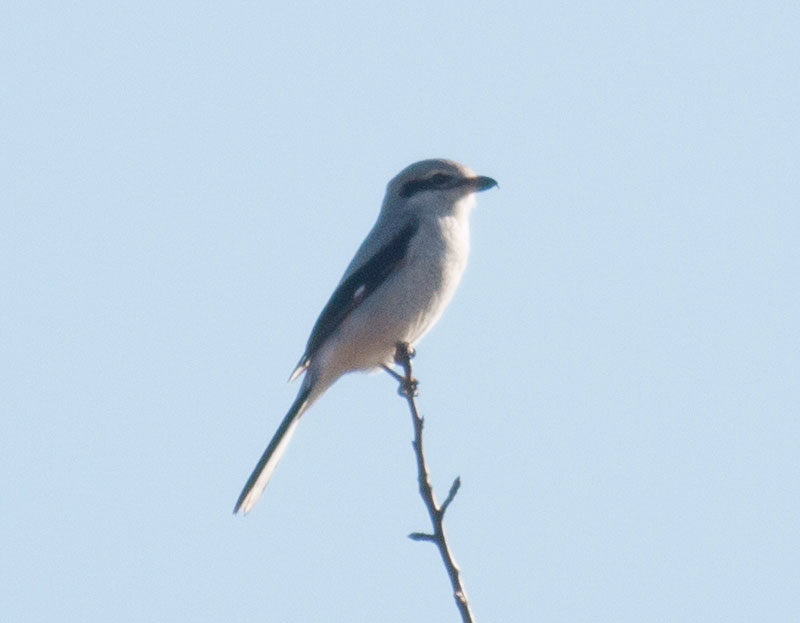Northern Shrike
2/21/16
By David Brown
If I were to ask you to name a bird in our area that preys on other birds, you may suggest a raptor such as Cooper's hawk, bald eagle, or peregrine falcon. However, in the winter a songbird can be added to that list.
The northern shrike is a predatory songbird that waits on elevated perches before swooping down to catch small mammals, birds, and insects. Shrikes have a hook at the end of their beak known as a tomial tooth, a feature also found on falcons. They rely on this tooth to sever their prey's spinal cord. Shrikes are notorious for impaling their prey upon the thorns of hawthorn trees and barbed wire fences. Since they do not have strong talons like raptors do, the thorns hold the prey in place while the shrike tears with its beak. A shrike will kill more than it can eat and store the rest for later.

Northern Shrike
The northern shrike's latin name is Lanius excubitor, meaning “sentinel butcher.” In other parts of the world it is known as the great grey shrike.
[Note that since this was written Northern Shrike and Great Grey Shrike were officially split into separate species, and Northern Shrike is now Lanius borealis.]
Its gray and black coloration and 13 inch wingspan make it look superficially similar to the northern mockingbird, but the shrike has a more upright posture and does not look as elongated as the mockingbird. The shrike also has a shorter hooked beak, a large black mask across the eyes, and more contrast between the black of the wings and the gray of the back.
In the summer, northern shrikes breed in Canada and Alaska in sparsely vegetated taiga habitat at the border of the tundra. Pennsylvania is at the southern end of the wintering range where they prefer a habitat of open field and brushy edge with high perches.
The northern shrike is a local rarity. Even an active birder is lucky to see one a year in the county, though many years none are reported. Last winter one was seen over a period of a few weeks at Rose Valley Lake. This winter one was found in Cogan House Township on February 6th by local birders running a Winter Raptor Survey route. One was also seen regularly this past October at the Warrior Run wetlands in Northumberland County. They are also found each winter at Bald Eagle State Park in Centre County. The best way to spot one is by scanning wires, treetops, and other perches. They tend to move every few minutes so scanning the same areas again and again may eventually pay off.
The loggerhead shrike is a similar species found year-round across the southern United States. It occasionally breeds in southern Pennsylvania, but is not expected in our area. The only record of loggerhead shrike in Lycoming County that I am aware of is from 1998.
Shrikes are a real pleasure to see in our area because of their rarity. From a human perspective a shrike's feeding behavior may seem vicious and gory, but for the shrike it is just another meal.